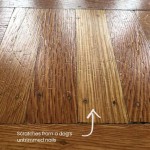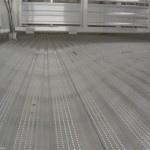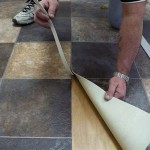How to Install Ceramic Tile Flooring on Concrete
Ceramic tile flooring is a popular choice for homeowners due to its durability, water resistance, and stylish appearance. Installing ceramic tile on concrete can be a rewarding DIY project, offering a chance to enhance the look and value of your home. This guide will provide a comprehensive overview of the process, outlining the essential steps and considerations to ensure a successful installation.
Step 1: Prepare the Concrete Subfloor
A well-prepared subfloor is crucial for a successful tile installation. The concrete surface must be clean, dry, and level to ensure the tiles sit evenly and securely. Start by thoroughly cleaning the concrete using a stiff-bristled brush and a cleaning solution designed for concrete. Remove any loose debris, dirt, or paint chips. Next, assess the levelness of the subfloor using a level. If there are significant uneven spots, consider using a self-leveling compound to create a smooth surface.
After the concrete is clean and level, it's essential to address any cracks or imperfections. Small cracks can be filled with a concrete patching compound. Larger cracks may require specialized repair techniques. Once the repairs are complete, allow them to fully cure before proceeding to the next stage.
Step 2: Install a Moisture Barrier
Concrete can be prone to moisture, which can damage tile installations and cause problems like mold growth. To prevent this, install a moisture barrier over the prepared concrete subfloor. This barrier acts as a protective layer, preventing moisture from reaching the tile. Common moisture barrier options include polyethylene sheeting or a specialized moisture-resistant underlayment.
When installing the moisture barrier, ensure it overlaps by at least 6 inches at the seams and extends up the walls by at least 4 inches. Secure the barrier using construction adhesive or staples, ensuring it's tightly adhered to the subfloor.
Step 3: Install a Mortar Bed
A mortar bed provides a stable and adhesive base for the ceramic tiles. The mortar should be a high-quality, thin-set mortar designed for ceramic tile installations. Before applying the mortar, check the manufacturer's instructions for the recommended consistency and application techniques. Using a notched trowel, spread a thin layer of mortar evenly over the subfloor, ensuring adequate coverage for the tiles.
The trowel's notches create grooves in the mortar, which help hold the tiles in place and allow for proper air circulation, preventing the tiles from delaminating. The size of the notches on the trowel should be chosen based on the size and thickness of the tiles.
Step 4: Laying the Ceramic Tiles
Start laying the tiles from the center of the room, working outward. This approach helps distribute any minor misalignments evenly. Lay the tiles in a pattern that is aesthetically pleasing and suitable for the space. The tiles should be spaced evenly, using tile spacers to maintain consistent gaps between them.
As you lay each tile, press it firmly into the mortar bed, ensuring it is level and flush with the surrounding tiles. Use a rubber mallet to tap the tiles gently into place, ensuring they are properly seated in the mortar. Periodically check the levelness of the tiles using a level and adjust as needed.
Step 5: Grouting the Tile
Once the tiles are laid and have had sufficient time to set (typically 24-48 hours), it's time to apply grout. Grout fills the spaces between the tiles, providing a finished appearance and preventing moisture and dirt penetration. Choose a grout color that complements the tile color and overall design scheme.
Using a grout float, spread a thin layer of grout over the tiles, ensuring the gaps between them are filled completely. Allow the grout to set slightly before wiping away any excess using a damp sponge. Repeat this process for all the tiles, ensuring a consistent and smooth finish.
Step 6: Seal the Grout
To protect the grout from stains and moisture, apply a tile and grout sealer after the grout has fully cured. Apply the sealer evenly over the entire tile surface, following the manufacturer's instructions. Allow the sealer to dry completely before applying any furniture or heavy objects on the new tile floor.
Following these steps and choosing high-quality materials will ensure a successful and durable tile installation. Remember to take your time, pay attention to detail, and consult with a professional if you encounter any challenges or have any doubts about the process.
:max_bytes(150000):strip_icc()/can-you-install-tile-directly-on-concrete-1822600-04-458f7bb6c78348c1835cf8054ef36553.jpg?strip=all)
How To Install Tile Over Concrete

Tiling Over A Ed Concrete Slab Fine Homebuilding

How To Install Ceramic Tiles On Concrete Floor Tile Installation

How To Lay A Tile Floor On Concrete Diy Homeimprovement

How To Install Ceramic Tiles On Concrete Floor Tile Installation

How To Lay Floor Tiles On Concrete Welcome The Rubi Tools Blog

Complete Guide On How To Install Ceramic Floor Tiles Rubi Blog Usa
How To Lay Floor Tiles On Concrete Stonesuper

How To Install Ceramic Tiles On Concrete Floor Tile Installation

How To Install Ceramic Tile On Concrete Using Thinset Mortar Construction Repair Wonderhowto
Related Posts








